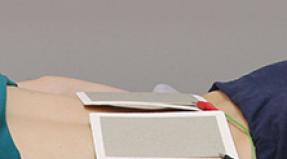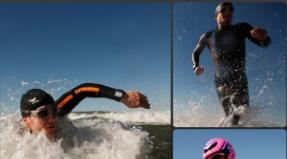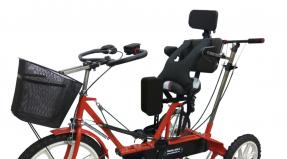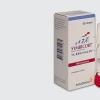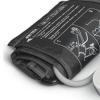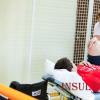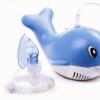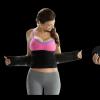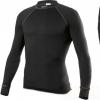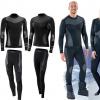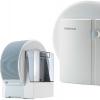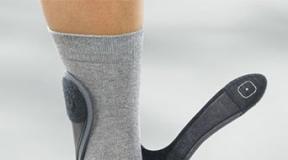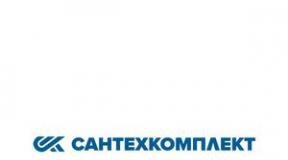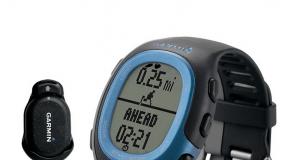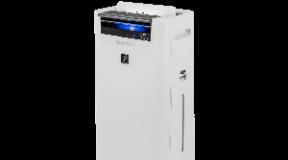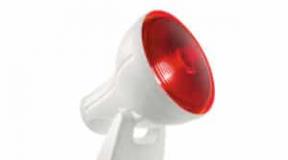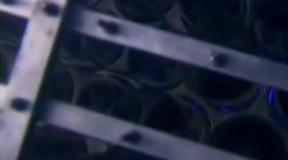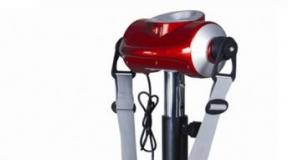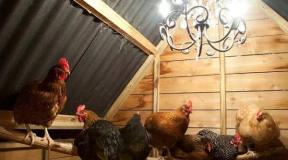Physical development of the child at home. Some tips for the physical development of preschool and primary school children
Both moms and dads want their children to be agile, strong, athletic. Of course, this largely depends on the natural data of the child, but how much attention the parents pay to him also plays an important role in the physical development.
It is important from childhood to teach the child to physical education so that daily activities bring him joy and pleasure. Even if he does not grow up to be a champion, regular exercise will help him avoid many health problems, become cheerful and active. Classes can and should be started already from infancy, this will help the baby not only develop better physically, but also intellectually, because in the first year of life, physical and intellectual development are inextricably linked.
Lesson rules
It is necessary to remember and follow the rules for conducting classes so that they really benefit and do not harm your baby.
- Before starting classes, be sure to consult your doctor. Almost every clinic has a massage room and a room for physiotherapy exercises. Let the exercise therapy doctor or an experienced massage therapist examine your child, tell you what to look for, show you special exercises that are suitable specifically for him (one child may need to perform a set of exercises aimed at strengthening certain muscle groups, and the other, on the contrary, on relaxation and toning).
- Classes and the intensity of the load should take into account the age and level of physical development of the child. A forced load will not only not contribute to physical development, but, on the contrary, will lead to a deterioration in the child's health, and problems may not appear immediately, but at an older or even mature age. You cannot do something with a child that he is not physically ready for.
- Gradually increase the load and duration. Start with five to ten minutes and work up to 40-60 minutes daily.
- Monitor the child's condition during class, in no case do not overwork. It is better to work out three times for 15 minutes during the day than one time for 45 minutes.
- Classes should be held one hour after or half an hour before meals.
- If the child is feeling unwell, the temperature is high, classes should be canceled.
- Do not force the child if the baby is not in the mood for classes, they should be postponed for a while and invite him to work out a little later.
- For children of preschool age, it is desirable that the classes take place in a playful way.
- The room where you are studying should be fresh, it should be well ventilated or the window should be left open.
- Exercises should be chosen in such a way that all muscle groups develop harmoniously.
- Alternate active exercise with relaxation exercises.
- Always approve and praise your baby, even if something does not work out right away - he just needs your support and confidence in his abilities.
Sports equipment from ordinary things
It's good if the apartment has a place for at least a small sports complex. But, unfortunately, this is not always possible. And then fantasy comes to the rescue. It will allow you to turn the most ordinary things into sports simulators.
Crib sidewall
Very often, parents move the crib close to the adult and take out one of its walls. It turns out such an almost joint dream: the child sleeps with his parents, but at the same time in his own bed. This is very convenient, because in this case it is much easier for a mother to take care of her baby during a night's sleep. This "unnecessary" sidewall will become your child's very first sports equipment.
In this case, the bars of the lattice turn into ladder rungs. You can place it directly in the bed at an angle, tying it to the top bar for security. If your baby is already walking on the floor, lean the side against the sofa or bed, but do not leave the baby alone so that he does not knock the ladder over on himself. Attach retainers (for example, plastic furniture legs, available from the furniture fittings department) to the side uprights of the ladder at several levels. So you can fix it by leaning it against a sofa or chair with a greater or lesser inclination, and the ladder will not slide out. For this, use self-tapping screws that you screw into the wall along the height of the ladder, so that it is located almost vertically at a short distance from the wall. Then make a hole in the side posts with a wide drill bit and fix it on the self-tapping screws. And if there is a permanent place in the apartment for a ladder, attach it to the wall. For this, use the screws that you screw into the wall along the height of the ladder, so that it is located almost vertically at a short distance from the wall. Attach hanging brackets to the side uprights (available from hardware stores or hardware stores) and screw the ladder into place.
This "mini-Swedish" wall for babies can be used from 4-5 months. First, the crumb will grab onto the lowest twigs, then it will begin to pull itself up and kneel, and later on its legs. Do not interfere with the kid to master the ladder on his own, do not put it down - just show how you can reach the bottom bar with a handle. When the child is ready, he himself will understand how to pull himself up, get on all fours and legs. Such a ladder will give the kid a lot of joyful discoveries from knowing the capabilities of his body, will develop strength and dexterity. A little later, when he is already confidently standing on his legs with support, you can show how to climb the ladder by rearranging the arms and legs. Toddlers quickly master this science, and under the supervision of adults, even a 7-8-9 month old child, even before he begins to walk, will be able to climb on it on his own.
And walking on the rungs of the side-ladder lying on the floor will strengthen the child's foot and help prevent development. You can start walking along it with your baby when he starts to move by the arms. Include walking the ladder in both directions (back and forth) in your daily activities, repeat the exercise once or twice a day.
Ladder
This wonderful household ladder will also perfectly diversify your sports activities. Toddlers can use a stepladder to learn to stand up and then climb and descend the stairs. Such activities prepare the child for climbing stairs, strengthen muscles, and develop dexterity. Children love to climb up. Older guys (2.5 - 3 years old) climb with pleasure, and climb down from the other side. Attention! Do not leave a child, even an adult, unattended on the stairs.
Changing board
Most likely, it is on it that you will do your baby's first exercise and massage. But even after he gets out of infancy, the board can come in handy. Using the fixing legs of the changing board, place it near the sofa or chair so that it does not slide out. You will get a wonderful inclined board - a slide.
At first, you will hold the baby by the hand, and after a while he himself will be happy to run up and down the hill. Walking on an inclined plane is very useful, it helps to form the correct one, strengthens the foot and prevents the development of flat feet.
Cushions
Moms don't always encourage their kids' natural urge to jump on sofas. But jumping off sofas can be allowed. However, for kids 2-2.5 years old, jumping from a sofa to a hard floor is undesirable - their joints and ligaments are not yet ready for such loads and there is a high probability of an unsuccessful landing. Put down old chair or sofa pillows, an unnecessary mattress instead of gym mats. Soft pillows will protect the baby from bruises, and you can be sure that your child will simply have a lot of pleasure, and the benefits of jumping for the development of physical qualities are undeniable - they improve the functioning of the vestibular apparatus, help develop coordination, strength and dexterity.
Long stick
In massage rooms and exercise therapy rooms, special plastic sticks are used for classes with children, on which children walk with the help of an instructor. Such exercises strengthen the foot, they are used in sets of exercises aimed at improving posture, treating flat feet and other orthopedic problems. Instead of a special stick, you can use an old curtain curtain or a floor mop handle.
If you use a wooden stick, make sure there are no cracks or burrs on it, you can even rub it with a sandpaper for smoothness. Walk with your child along the stick. In this case, the heels should be directed inward, and the toes outward. When walking, the stick should touch the midline of the foot. Show your toddler how to roll the stick with your feet in front of you while sitting on a high chair or baby bench.
Chair
Sooner or later, any child begins to discover new levels in the room. Higher and higher and higher! After all, in order to reach the shelf with trinkets in my mother’s closet or the sink with dishes, it’s enough just ... take a chair! Some especially nimble kids already at one year old learn the delights of climbing, others master this skill a little later ... If your kid could climb onto a chair on his own, then tables and window sills will soon obey him. The ability to climb on a chair develops not only children's curiosity, but also the strength of the arms and legs, strengthens the back - in general, from the point of view of physical development, it is very useful.
Obstacle course
Play with your child in an obstacle course consisting of a mattress or carpet and some chairs. Come up with your own options for passing the "obstacle course" depending on the length of the room and the materials at hand. Let the baby crawl along the rug, then climb over the chair, crawl under the next chair, and from the coffee table covered with a blanket, there will be a beautiful tunnel leading directly to Mom's hug. Play with your child, crawl, climb, set an example - I'm sure you yourself will get a lot of positive emotions from this.
Massage paths
It is known that foot massage is very useful not only for the prevention of flat feet, but also for solving problems of the whole organism, because this type of massage affects the reflex zones and biological active points of the foot. In sports stores, you can purchase a special massage track or make it yourself. A mother-needlewoman can sew a path by filling it with peas, beans, buckwheat. Such a path will strengthen the legs, develop tactile sensitivity and, by activating reflex zones, heal the child. The simplest massage mat is easy to make from a needle massager - Kuznetsov's applicator. Cover the massager with a thin blanket or bedspread and your foot mat is ready!
But just before you offer the exercise mat to your child, try walking on it yourself. If the needles are too sharp, put a thicker blanket on it, and if the needles, on the contrary, will hardly be felt, cover them with something thinner. In my experience, in order for the mat to turn out "just right", it is enough to lay a warm bike diaper on the applicator. And to make walking on the rug even more fun, add it to the obstacle course.
Big soft toy
Such a toy (perhaps even more than one) will surely be found. More often she just gathers dust in the corner of the room, carefully donated by one of her friends, or is used on the sofa instead of a pillow. My children have come up with a new application with a sports direction for their one-meter plush dog - it's so cool to jump and climb over it! And we have already talked about how useful jumps are for the physical development of children - they strengthen muscles and joints, develop dexterity and coordination, and improve the functioning of the vestibular apparatus.
Putting together a mini-sports complex
Do you really want your child to have at least a small sports corner, but there is not enough space in your apartment even for rings and wall bars? Or buying a children's sports complex does not fit into the family budget? Let me tell you about how I found a way out of this situation. Our "sports complex" cost us less than 1000 rubles, and the joy and benefits of the lessons for children cannot be estimated!
So, for starters, we will select the necessary equipment in the sports store. Usually, all DSK (children's sports complexes) have different configurations, and most of the equipment can be purchased separately. That is, your sports corner can be equipped with a full set of equipment, with the exception of the basic wall bar. You can buy rings, a rope ladder, a bungee, a swing, a trapeze, a rope, and even a punching bag.
Then we go to the hardware store and get there two or three (depending on how many fasteners the shells you have selected) strong steel enough curved hooks like clothes. We also buy long self-tapping screws there (in an amount equal to the number of holes in the hooks). Self-tapping screws must be long so that they are screwed not only into the top plinth, but also into the wall, and the hooks are held as firmly as possible.
The entire corner will be located in the doorway. Therefore, choose the most convenient opening for practice. To begin with, you will have to take measurements: one hook (you can hang a rope, bungee or other projectiles attached to one loop on it) will need to be placed right in the center of the opening. The other two hooks should be attached at equal distances from the center, while the distance between them should not be narrower than the rungs of the ladder, if it is in your kit, and not too close to the side jambs (preferably along the width of the ladder) - you will hang the ladder on them , rings, trapezoid. On the flat surface of the top plinth, mark the points where you will screw the screws, and make holes with a drill. It is very important that the holes are made symmetrically about the center, otherwise it will be unsafe to use the corner. Now all that remains is to install the hooks and the sports complex is ready! Hang rings, a ladder or trapeze, a bungee or swing, and change sports equipment as often as your child wishes. Perhaps the only drawback of such a sports corner is the inability to hang several shells at the same time. But it is compact, suitable for any apartment and will cost less than the whole complex. To keep children safe during class, place an old mattress instead of a mat and do not leave them unattended. Another great advantage of such a sports corner is the ability to quickly remove or raise the equipment while the children are not exercising on them. Thanks to this, you can be calm that the child will not climb the stairs without you and will not fall out of there while you are busy with your own business and do not control him.
Good luck to you and your kids, joy and health!
The article reflects the physical education of children in the kindergarten of the Early Age group, the importance of physical education; the relevance of the topic of the article is considered; as an example, the work of teachers of kindergarten №69 Marina is given.
Download:
Preview:
Pedagogical conditions for the physical development of young children in preschool
Every day we guys
It starts with charging!
Physical education of children is the most important part of the human education system. It is directly related to the preservation and strengthening of children's health, the foundations of which, as you know, are laid from childhood.
Health does not exist by itself, permanent and unchanging. It needs careful care from a very early age. That is why this period - early and preschool age - is important and valuable. At this time, the most important motor skills are formed in the child, the prerequisites for further development of the personality are created, the foundations of health are laid. In childhood, basic values \u200b\u200bare determined for the child, relations with the outside world are formed, with oneself in it, the development of a variety of methods of activity and realization of oneself in them takes place, experience is accumulated.
Currently, the preservation and strengthening of children's health is an important task of both the family and society, the state. For the adult generation, raising children, this period must not be missed and maximum efforts must be made in this direction. After all, children's health is the future of our country. Only a healthy young generation will be able to ensure the birth rate of healthy children and create a healthy potential for the future.
Considering today, I would like to draw attention to the variety of developmental activities for children of different ages and different directions. They are very popular with their parents. In almost every family, a child goes to classes such as a foreign language, chess, fine arts, a computer, and so on. All this contributes to the development of the child's mental abilities, increasing his intelligence. But physical development goes by the wayside, less attention is paid to physical activity, which negatively affects the health of the child.
Unfortunately, the statistics are not encouraging in their performance. It is known that:
- no more than 14% of children are born physiologically mature;
- 25-35% of children who entered the 1st grade of school have physical disabilities or chronic diseases;
- 90-92% of secondary school graduates are in the "third state", i.e. they do not yet know that they are sick;
- only 8-10% of school graduates can be considered really healthy;
- 5% of the country's adult population is chronically ill, and 95% are in the "third state";
- the overall incidence of children increased by 21.6 thousand per 100 thousand of the corresponding population over 5 years.
It helps to improve the health of children, to support and preserve it.physical education... By definition , it means a pedagogical process, which is aimed at improving the forms and functions of the child's body, at the formation of motor skills, abilities, knowledge, at the education of physical qualities.
The process of physical education, as a set of measures aimed at the development of a growing organism, its functions, is a priority and relevant in the entire educational work of a preschool institution.
The purpose of physical education is the formation of the foundations of a healthy lifestyle, its focus on health promotion, physical and mental development, emotional well-being of each child.
The tasks of physical education include:
- wellness;
- educational;
- educational.
Wellness tasks:
- protection of life and health promotion (ensuring the normal functioning of all organs and systems of the body);
- all-round physical improvement of body functions;
- increased efficiency and hardening.
Educational tasks:
- the formation of motor skills and abilities;
- development of physical qualities;
- the child's mastering of elementary knowledge about his body, the role of physical exercises in his life, ways to strengthen his own health.
Educational tasks:
- education of interest and need for knowledge by physical exercises;
- versatile, harmonious development of the child (mental, moral, aesthetic, labor).
With help physical educationcertain goals are achieved.Attachment 1.
Physical Education in the Early Age Group
In GBDOU kindergarten №69 Marina Krasnogvardeisky district physical education is carried out according to the environmentally friendly program of Vyacheslav Semenovich Kovalenko "To a healthy family through kindergarten."
This program is the result of theoretical research in the field of various forms of recreational activities with children of prenatal and early age, preschool and school age. For 6 years, work was carried out and the accumulation of experience within the framework of the program "To a healthy family through kindergarten" to restore family traditions of raising children. The “School of Parents” was created for kindergarten No. 111 and women's consultation office No. 22 in the Vyborgsky district of St. Petersburg.
The program "Towards a Healthy Family through Kindergarten" is aimed at reorienting preschool institutions to the system of "Parents' Schools" - a system of joint education of parents and children with the help of highly qualified specialists (teachers and medical workers) and methodological support of kindergartens. Of all the links in the education system, it is the kindergarten that is really engaged in the improvement of children today and can demonstrate to parents the peculiarities of raising and improving a child of any age group.
The Healthy Family Through Kindergarten program is an extension of the experience of an ecological wellness program. Its basis and recommendations are based on research not only in the field of medicine, homeopathy, osteopathy, pedagogy, but also ecology. As you know, children are the most sensitive to environmental pollution.
In the program of V.S. Kovalenko, the section of physical education is represented by a system for assessing the physical health of a child and a system of measures and preventive technologies... Targeted program to increase the functional reserves of the body and ensure the safety of physical training.
The ecological wellness program for children includes nine main sections:
- diet
- hardening
- physical education
- dental prophylaxis
- ensuring environmental safety
- increased body resistance
- vaccine therapy and vaccine prophylaxis
- normalization of the psychological microclimate
- counseling of a child, parents, staff.
Physical education of children in kindergarten is carried out by a physical education teacher, as well as group educators. To maintain children's interest in physical education classes, plot and game forms, breathing exercises are widely used. The systematic conduct of classes contributes to:
- comprehensive physical development of children,
- formation and improvement of skills of basic movements,
- formation of correct posture and prevention of flat feet,
- fosters a good habit of playing sports.
The physical development of children in the Early Age group is carried out in accordance withwith the mode of physical activity... Appendix 2.
Every day the pupils of the Early Age group are invited to morning exercises in the music hall together with other groups. The lesson is conducted by a physical education teacher to music. Basic physical exercises are performed (bends, squats, turns, etc.). Children study with pleasure, try, return to the group happy and cheerful.
According to the schedule, on Tuesdays, Wednesdays and Thursdays, normative and educational activities are carried out - physical development. Children, together with a physical education teacher, travel by train from the playroom to the music hall. The lesson is organized in a playful way, sports equipment is used, accompanied by music. Children learn to walk in a group one after another, march, skills in handling sports equipment (for example, a ball, a hoop) are formed, coordination and attention are developed.
With the onset of summer, classes from the music hall are transferred to the open air - they are held outdoors.
In addition to sports activities conducted by a physical education teacher, the group educators are directly involved in physical education of children in the Early Age group. They spend physical education minutes. Most often this is finger gymnastics or breathing exercises. They, accordingly, are aimed at the development of fine motor skills and the development of the respiratory apparatus, are selected according to the season, according to topics. Children like it very much. They are held more often in the minutes of waiting for any regime moments (for example, before the distribution of lunch). Sometimes the pupils of the group are invited to independently carry out such exercises, which finds active support from their side. Appendix 3.
According to the regimen of physical activity, all children go through the training path immediately after waking up. It consists of several spiky rugs of different sizes and a roller path. They pass it barefoot, going from the bedroom to the playroom. At the same time, children's reviews are very different! Performing the exercise path, the feet are massaged, the corresponding centers are activated on them, the process of waking up is accelerated.
In addition to the training path, after sleep, the group's educators conduct game gymnastics in the room - the Vorobiev Complex. It takes about 7 minutes and is carried out without shoes. As a result of this gymnastics, blood circulation improves, metabolic processes are normalized. At the end of it, the children thank each other.
For the development of sports skills and physical qualities of pupils, a sports corner has been created in the playing hall by the efforts of educators and with the assistance of a physical education teacher. It includes:
- sports equipment (balls large, small; soft ribbons with a ring, hoops);
- sports attributes (flags, rattles);
- wall target for throwing balls;
- massage mats, massage balls, as well as homemade massage machines made of kinder eggs connected in a chain - used by children to massage each other's backs;
- a card index for finger, eye, breathing exercises and a card index for outdoor games;
- children's footprints on the floor leading to the sports corner and children's handprints on the wall, following which children reach up.
All the inventory, fixtures and filing cabinet of the sports corner are actively used in their free time, children find use for everything. Appendix 4.
Within the framework of the schedule, joint activities in physical culture are organized. It includes physical culture leisure - in the music hall, a physical education teacher conducts relay races, sports competitions for children of the younger group. The event is short, but very interesting. Held once a month.
Health Day is held in general with other groups with the participation of some heroes (for example, microbes, the fairy of purity). The teachers prepare a scenario according to which relay races, competitions, tasks of a different nature are organized. The emphasis is placed not only on the development of physical qualities, but also strengthens and expands the knowledge of children about hygiene, about the structure of the body, about the benefits and harms of various influencing factors for our health. In a playful way, children with the greatest attention show interest and participation in this type of information, actively compete.
The most interesting and exciting sight is sports events with the participation of parents! The holiday is held according to the scenario, the main roles are played by the educators of the group with the participation of a physical education teacher. I remember very much the holiday timed to the Defender of the Fatherland Day - children competed with their dads! (or with "sports" moms). The delight of children and parents knew no bounds! Having passed sports tests together with their parent, each family was awarded a diploma and a small gift.
Analyzing the work of a physical education teacher and the work of the Early Age group educators, there is a positive trend in the development of children, many physical skills are learned, physical qualities are developed, health is strengthened, posture is improved, the body is hardened, an interest in sports is instilled. For example, many children, when they first get into a group, do not know how to walk by "train" holding each other - over time, it turns out to master a round dance. Many have learned to jump on one leg, catch a ball rolling on the floor, twist a hoop on their hand. Such small victories for each child are worth a lot of efforts, both for the children themselves and for educators and teachers. I would like all this to find support from the parents, who are always worried about their child and his health. I would like them to find the opportunity to attend children's events more often, to be closer to the child's life in kindergarten, to himself!
Applications
Attachment 1
Physical education tools
Facilities
purpose
Terms of use
Physical exercises: gymnastics (basic movements, general developmental exercises, building and rebuilding, dance exercises); games (mobile, plot, plotless, games with elements of sports); sports exercises (cycling, swimming, sliding, etc.); simple tourism (hiking, skiing) - the main specific means of physical education
Used to solve health, educational and educational tasks of physical education
Provide an effective solution to the problems of physical education, if they act in the form of a holistic motor regime that meets the age and individual characteristics of each child
Psycho-hygienic factors: general regimen of exercise, nutrition, rest, sleep, hygiene of clothes, shoes, physical training equipment, premises - an additional means of physical education
Increase the effectiveness of the effects of exercise
Psychophysiological comfort of the child
Ecological and natural factors: sun, air, water
They enhance the positive effect of physical exercise on the body and increase its performance. Used to harden the body
The positive effect of this tool is achieved only with an environmentally friendly nature.
Appendix 2
Movement mode
Organized forms of motor activity
duration
ness
monday
tuesday
wednesday
thursday
toe
face
1 half day:
Physical development
1 half day:
Artistically
aesthetic
development "music"
Physical education
Morning gymnastics
Gymnastics after sleep Vorobyov's complex
Training path
Walk (outdoor games and physical exercises
1 half day
2 half day
Continuation of Appendix 2
Continuation of Appendix 2
Organization of joint activities
Cooperative activity
Duration
Features of the organization
Physical culture leisure
10-15
1 time per month
Sports Holidays
2-3 times a year
Health day
Once every 2 months
Appendix 3
Finger gymnastics.
1.We chop and chop cabbage,
(alternate movements of straight palms up and down)
We salt-salt the cabbage,
(we put our fingers in a pinch and stroke the fingertips one by one)We are three or three cabbage,
(rub cam on cam)
We press, we press cabbage.
(clench and unclench the cams)
And put it in your mouth
(we send a pinch in our mouth and say: "Yum-yum!")2. Lullaby
(alternately bend fingers on the handle)
This finger wants to sleep
This finger went to bed
This finger took a nap,
This finger just fell asleep
This one is fast, fast asleep
Quietly sniffs with a nose ...
3. Ball
Inflate the balloon quickly.
It gets big.
Suddenly the balloon burst, the air came out -
He became thin and thin.All fingers of both hands are in a "pinch" and touch the tips. In this position, we blow on them, while the fingers take the shape of a ball. The air "comes out" and the fingers return to their original position.
Appendix 4
List of references
1 Gryadkina T.S. Educational area "Physical culture". How to work under the Childhood program: Study guide. - SPb .: LLC "Publishing house" Childhood-Press ", 2012
2 Derkunskaya V.A. Spring of health: technologies of health-preserving support in the experience of a preschool educational institution: Study guide. - Publishing house of the Russian State Pedagogical University named after A.I. Herzen, 2009
3 Kozhukhova N.N. Physical education teacher in preschool institutions: Textbook for students of higher and secondary pedagogical educational institutions. - M .: Publishing center "Academy", - 2002
4 Scientific-methodical journal Kindergarten: theory and practice №5 2013
5 Internet resources
6 Collection of working documents Recreation program "To a healthy family through kindergarten", St. Petersburg, 2000
In a variety of games, from jumping rope to throwing the ball, these games contribute to the formation of a strong body.
In our time, the art of play has gone through a lot of changes, because today children spend more time playing video games, rather than playing physically. Still, the best that parents can do for their children is to come up with games that stimulate the physical development of your child.
We repeat after the presenter
For young children, coordinated movement is a very important skill. Most games and sports activities require children to work together, even if only a little. Children under the age of five don't particularly like to compete, but they like to move together.
For example, repetition is extremely effective for young children. Two or more children repeat a series of physical exercises after the leader. At the playground, the presenter can climb up and down a slide, walk along a narrow curb, or run down the stairs.
Children only need to do the same. This game and other cooperative, but not competitive games such as "round dance" or "bridge" are most interesting for children aged three to five.
Ball game
As the baby grows, his movements become more confident and it is easier for him to react to the world around him. Ball play helps to develop good coordination of large muscle groups as well as hand-eye coordination. Bouncer, basketball, soccer and baseball are all great games for kids over the age of five.
It is very important to remember that children under the age of 9-10 do not yet fully understand the concept of teamwork and do not always know how to play with dignity. They still find it difficult to interpret the emotions of other people and put themselves in their place. To be more effective, try to focus your younger children on the importance of working together.
At this age, the baby is already starting to enjoy the competition. They especially enjoy competitive and team games as they see that success depends on their efforts, agility and discernment. Such games can instill a lifelong love for physical sports in a child.
Let's dance
Children of all ages and all genders love to dance. Research has shown that listening to music and understanding musical rhythm and tempo improves mathematical ability. And dancing improves spatial thinking and flexibility.
Dance lessons, any dance, from ballroom and jazz to street and folk, help children understand all the possibilities of their bodies, as well as learn to express emotions in movement. When children begin to invent and express themselves through dances on their own, their bodies become stronger and more flexible.
The purpose of physical activity
The main goal of introducing children to physical play and activities from an early age is to help them find the right physical activity that will keep them engaged for life. You do not need to set a goal to make your child a successful athlete, you just need to help him find the activity that he will love so much that he can achieve success in him.
Focus on introducing your children to a wide variety of physical games and sports and help them find what interests them the most. Don't make the game hard work by counting all the wins and losses. Nothing will turn a kid away from sports and physical activities like the fear of failure.
Video - Dance game for children 4-5 years old
With the appearance of a baby in the family, parents take responsibility for its correct development. The development of a little man will largely depend on heredity - genetically inherent psychophysical and anatomophysiological characteristics, the environment that surrounds him, and upbringing. One of the most important factors contributing to the development of a growing organism is physical education.
What tasks in the development of children does physical education solve?
The goal of youth and adult sports is to maximize the development of certain motor functions, but for children it is a means of a completely different kind.
Good to know: if an adult body needs special training for development, then a child's body develops naturally, and physical activity should contribute to the formation of the musculoskeletal, ligamentous and muscular apparatus, as well as to increase the compensatory capabilities of the body, strengthen immunity.
Along with physical education, it is of great importance for the formation of a healthy lifestyle for children to follow the rules of personal hygiene, hardening, organization of rational nutrition and adherence to the daily routine.
For babies who are just mastering the first skills, their physical activity is the optimal physical activity. In this light, parents should not limit their child to certain limits, for example, leave the child in the playpen or walker all the time. The best gym for kids in their first two years is a clean, warm, and safe floor space.
During physical education, the cardiovascular and respiratory systems are activated, the metabolism is accelerated, the musculoskeletal system is stimulated, physical endurance develops, motor skills are improved, and there is a positive effect on mental and mental development. However, for the effects of exercise to be truly beneficial, early physical education must be enjoyable, fun, and playful.
When studying with a child, it should be remembered that at present not only muscles, tendons and ligaments are growing, for the development of which, in its classic version, sports are designed. Internal organs, bones, the brain are subject to natural development in a child's body, new cells, including nerve cells, are constantly being formed in it.
In order for these processes to take place fully, a little man needs not only stimulation of physical activity, but also in, adequate rest, adequate to the loads received, otherwise the child's body will be in a state of lack of vital resources.
If the excessive load was one-time, then this will hardly affect the development of the body, however, the systematic repetition of such a situation, chronic fatigue, nervous overstrain will inevitably lead to inhibition and developmental delay. Thus, physical activity should always be optimal, fully consistent with the age characteristics and skills of the child.
 An obligatory element of physical education is hardening, which refers to the main ways to increase the body's resistance to temperature fluctuations in the external environment. In this case, the formation of adaptive reactions occurs with the participation of reflex, cellular and other mechanisms. Receptors - nerve endings that are located on the skin, perceive various irritations and transmit them to the central nervous system. As a result, the blood supply of the vessels of the skin and internal organs changes, sweating increases or decreases.
An obligatory element of physical education is hardening, which refers to the main ways to increase the body's resistance to temperature fluctuations in the external environment. In this case, the formation of adaptive reactions occurs with the participation of reflex, cellular and other mechanisms. Receptors - nerve endings that are located on the skin, perceive various irritations and transmit them to the central nervous system. As a result, the blood supply of the vessels of the skin and internal organs changes, sweating increases or decreases.To obtain a positive effect, it is necessary to adhere to some principles, including applying them systematically in all seasons, the strength of the irritating effect should be increased gradually, and it is also necessary to take into account the individual characteristics and emotional state of the child.
Hardening is done using natural factors (air, water, sun)... Air hardening should be started by simply ventilating the room. Other methods of air hardening include walks, air baths. In order for the walk to bring the proper effect, the child must be dressed according to the weather and so that the clothes do not hinder his movements. Air baths also obeys certain rules. They are carried out twice a day, gradually increasing the time from five minutes to half an hour. In this case, the baby should be vigorous, have a good mood, if signs of hypothermia appear (goose bumps), then he should be immediately dressed. In the future, it may be necessary to reduce the time of the procedure or reduce the area of \u200b\u200bthe exposed skin surface.
Water hardening procedures may include rubdown, dousing, showering, bathing, swimming. All hygiene procedures using water, if properly organized, can have a hardening effect. The most potent natural hardening factor is the sun's rays. They are subdivided into direct, oblique, diffuse and reflected.
Important: due to the significant physiological effect that radiation has on the child's body, sun hardening for children should be used with extreme caution.
For hardening purposes, scattered rays or otherwise chiaroscuro, which can be observed under the crowns of trees, are most suitable. Thus, children can take light-air baths.
Not the least important for the preservation of children's health is adherence to the daily regimen and rest... The main means of rest is good sleep, while the child should get enough sleep. Someone needs less time for this, someone more. Children usually spend at least 9 hours sleeping. Allowing children to lie in bed for a long time is undesirable, it disorganizes them, it is much better to do joint morning exercises, which will give a boost of energy for the whole day not only to the baby, but also to the parents.
 Physical activity for the little ones
Physical activity for the little onesAs mentioned earlier, the optimal physical activity for children under one year old is their own physical activity. The baby learns to roll over, hold his head, sit down, stand on his feet. All this is a lot of work for him, although for older children it does not require much effort.
Until the age of one year, it is possible to help strengthen the musculo-ligamentous apparatus of a child with the help of, and influence the formation of immunity through prolonged breastfeeding and hardening procedures.
After a year, when the child acquires upright walking skills and, due to his mobility, perceives massage sessions far from so calmly, classes must acquire a playful form. Walking at this age, the first necessary exercise, therefore, you need to encourage this skill in every possible way, call the baby standing at an insignificant distance, provoking him to come up to mom or dad, hide something in his fist or behind his back and invite him to find out what is hidden there. The most suitable time to study with your child than a walk is simply not to be found. Simultaneously with the training of the upright walking skill, the baby breathes fresh air, his body is enriched with oxygen and produces vitamin D, which is formed in the skin under the influence of sunlight. While on a walk, you can offer a 1.5-2 year old baby to walk along the edge. Such an activity teaches the child to walk correctly, contributes to the education of a sense of balance, the development of coordination of movements.
 At the age of two or three, classes become more and more diverse. Physical activity should include overcoming obstacles, playing with various gymnastic equipment, including with a ball. The workout can be performed, accompanied by rhymes and nursery rhymes, or using other game forms, for example, invite the child to find his favorite toy, walk like a duck or jump like a frog or a bunny. The example of adults has a beneficial effect on the desire of children to perform exercises, since babies are prone to imitation. If the mother shows the exercise and compares it with the movement of an animal or a familiar character from a fairy tale, then the likelihood that the child will remember and repeat it increases many times over. In addition, there is a great educational meaning in joint activities.
At the age of two or three, classes become more and more diverse. Physical activity should include overcoming obstacles, playing with various gymnastic equipment, including with a ball. The workout can be performed, accompanied by rhymes and nursery rhymes, or using other game forms, for example, invite the child to find his favorite toy, walk like a duck or jump like a frog or a bunny. The example of adults has a beneficial effect on the desire of children to perform exercises, since babies are prone to imitation. If the mother shows the exercise and compares it with the movement of an animal or a familiar character from a fairy tale, then the likelihood that the child will remember and repeat it increases many times over. In addition, there is a great educational meaning in joint activities.Tip: children aged three to five years, who no longer need outside help in order to walk, should actively move for at least three hours a day. But this time should be evenly distributed throughout the day.
If it is supposed to perform a set of exercises with the child, then its duration should not exceed 35-40 minutes, and the exercises are compulsorily selected in accordance with the motor skills already acquired by the baby and the characteristics of his mental and physical development. Gymnastic complex should cover all muscle groups, be aimed at their sequential development, include consistent work and short-term rest (about 40 seconds between exercises).
Loads for preschoolers
With muscular exertion, children under four years of age get very tired, however, as the structural and functional maturation of skeletal muscles and elements of the central nervous system increases the energy capabilities of the body and its ability to physical work.
For preschoolers, the concept of physical culture consists of:
- morning exercises
- physical education
- outdoor games
- sports entertainment.
Morning gymnastics
Such exercises contribute to the formation of correct posture, train the activity of organs and systems, prepare the body for daytime stress. Gymnastics includes walking, running, jumping and exercises for different muscle groups, including stretching, raising the arms up and to the sides, circular movements with the arms, squats, bends and turns of the trunk, raising the legs. It is advisable to carry out morning exercises in the fresh air or in a well-ventilated area, as well as combine classes with hardening procedures, that is, engage in a minimum amount of clothing.
Physical education classes
For physical education you will need sports Equipment like a hoop, ball, ladder, horizontal bar. It's great if the house has a wall bars. First, you can teach a child to throw the ball from different positions, with different hands, catch it, hit the ball on the target, jump in length and height, climb ladders and climb over obstacles. A set of exercises, as a rule, takes 40-45 minutes and consists of introductory, main and final parts. The introductory and concluding parts are given 6-8 minutes. At this time, it is supposed to prepare the child for the upcoming stress and allow the body to relax after it.
Important: you can start a physical exercise with walking, and end with stretching and breathing exercises. Abrupt cessation of training, that is, the absence of the final stage, has a negative effect on the heart and blood vessels.
The main part of the classes consists of general developmental exercises already familiar to the child, aimed at developing strength, dexterity, flexibility, speed, and learning new ones. In this case, power loads are considered optimal if the projectile (ball, dumbbell) can be lifted by the baby over his head 8-10 times with one hand, while making an effort.
Outdoor games
In the life of preschoolers, this type of physical education plays a significant role. Such games improve all the acquired skills of the child. They are usually held outdoors, and the resulting load is regulated by the duration of the game, its intensity, the availability of rest breaks, and also depends on the number of players and the size of the playground. Children 5-6 years old can already begin to acquaint with the simplified rules of games such as volleyball, basketball, football. As a rule, children are delighted to play with their parents, and then with their peers in the yard and school.
 Sports entertainment
Sports entertainmentThese include cycling, sledding, ice skating, rollerblading, skiing, swimming. As early as 2-3 years old, a child can ride a bicycle. Only at this age do children ride three-wheeled iron horses or with two additional wheels screwed to the rear wheel. For preschoolers, a two-wheeled bicycle is suitable, the dimensions of which will correspond to their height. Skiing and sledding are available for children from 3-4 years old, but it is advisable to start learning ice skating and rollerblading from the age of five. Swimming is a vital skill. With a systematic visit to the pool, this type of sports entertainment serves as a way of hardening the body.
If the child is a schoolboy
In a school institution, a certain amount of time is allocated for physical training. However, it is not enough for full physical development. In the period from seven to ten years, the foundations are laid for the formation of physical potential, new opportunities open up for obtaining complex motor skills, however, with the beginning of school attendance, the child's body will have to cope with additional mental and psychological stress, adjust to the new daily routine, therefore, the performance of children at this time, as a rule, is reduced.
Advice: students of the first grades need quality rest, rational nutrition, time for favorite activities, as well as additional loads carried out in a playful way more than ever.
At home, the child can do morning exercises with his parents or play a game in which he temporarily becomes a coach and teaches his mother a particular exercise. Significant changes in the morphology of muscle fibers occur at 12-13 years of age. This time is a turning point for the development of physical performance. During this period, muscle endurance increases significantly and, accordingly, the risk of overwork decreases.
Periods of Optimal Performance
Depending on the time of day, not only mental but also physical performance of children is found. It reaches the highest level from 10 to 14 and from 17 to 19 hours. Efficiency increases gradually from 7 to 10 am and from 4 pm to 5 pm and also gradually fades from 2 pm to 4 pm and starting from 7 pm. From 11 pm to 6 am, as a rule, the least efficiency is noted.
When planning physical education for your child, you should remember about his individual characteristics. For children who are larks, it is advisable to shift the workout 1.5-2 hours closer, and for owls, push the workout time back by the same period of time. In addition, it must be borne in mind that performance will be reduced for 1-1.5 hours after eating.
Good to know: periods of optimal performance are also distinguished during the week. So, it is optimal to plan the greatest physical activity on Tuesday, Wednesday or Thursday.
The best results are obtained by working out the body every 5-7 days, so it is enough to choose one of these three days. There are also days in the week when performance increases (Sunday and Monday), and days when it decreases (Friday and Saturday). Thus, on Sunday and Monday, training should be done at a lower intensity, and it is advisable to devote Friday and Saturday to loads aimed at developing coordination and dexterity.
 The frequency of training for schoolchildren in summer and during school hours may differ. During summer holidays, they can be more intense or they can be carried out more often, since the child does not receive additional mental stress, he has a lot of time to rest, he gets enough sleep, and eats well. The exact opposite situation occurs when a child is ill. During illness, any workouts should be canceled. If the child's body temperature is not elevated, then only walks are shown to him, since fresh air has a beneficial effect and accelerates recovery. After illness, you should start with light training. It usually takes at least two weeks to restore tone. If the child becomes ill during the exercise, then the training should not be continued, it is better to postpone it until the next time.
The frequency of training for schoolchildren in summer and during school hours may differ. During summer holidays, they can be more intense or they can be carried out more often, since the child does not receive additional mental stress, he has a lot of time to rest, he gets enough sleep, and eats well. The exact opposite situation occurs when a child is ill. During illness, any workouts should be canceled. If the child's body temperature is not elevated, then only walks are shown to him, since fresh air has a beneficial effect and accelerates recovery. After illness, you should start with light training. It usually takes at least two weeks to restore tone. If the child becomes ill during the exercise, then the training should not be continued, it is better to postpone it until the next time.Learn more about the importance of good nutrition and drinking
Adequate nutrition contributes to the accelerated development of the child. Protein is the main material for the formation of muscle tissue, so a growing body needs a large amount of this substance. A child's daily diet should contain at least 40 grams of animal proteins, since vegetable proteins are significantly inferior to them in quality and do not contain some essential amino acids. Thus, throughout the day, the child's menu should include dairy products (milk, yogurt, cottage cheese), meat and fish (but not more than 300 grams per day), soft-boiled eggs or in the form of fried eggs. The thing is that the protein is absorbed better after heat treatment, and the yolk is raw.
Good to know: water is also necessary for the normal functioning of the body. The norm is considered 40 grams of water per kilogram of body weight per day, but with an active lifestyle, this indicator needs to be adjusted upward.
However, drinking during the workout itself is not recommended, as this increases the load on the heart. It is possible to restore the body's fluid reserves, wasted during exercise, after the body enters its normal mode of life. You can drink not only water. You can quickly restore the body's energy resource and muscle tissue with 1-2 glasses of milk with 1-2 tablespoons of honey. Such a drink is indicated both after strength training and after active games, but after a while it should still be supplemented with plain water.
Physical development of the child. Video
The modern world provides children and parents with many options for fun and learning, but often in the race for novelties, adults make the mistake of not paying enough attention to the physical development of the younger generation.
Gadgets, computers, various game panels captivate the baby, and parents are given the opportunity to solve everyday issues. After all, what could be easier than turning on a cartoon and minding your own business? But this behavior of parents is increasingly leading to sad consequences. The crumbs' lack of interest in outdoor games, physical inactivity, reduced interest in the environment negatively affects the overall development of the baby. Decreased muscle tone, low flexibility and low joint mobility can cause various diseases.
One of the tasks of parents involved in the upbringing of preschool children is to provide conditions for attracting the attention of the toddler to an active lifestyle, passion for sports.
The emphasis on a sporty lifestyle should be made immediately after the birth of a child, to influence the entire period of growing up.
Physical development - changes in the body that occur throughout life, indicating the general condition of the body and internal systems.
An athletic, externally and internally trained baby copes better with various infectious diseases, has a stable psyche, vigorous and cheerful.
Preschool children are naturally very active. By running and jumping, exercising muscles and improving oxygen exchange between cells, they thus strengthen the cardiovascular, nervous and respiratory systems.
Understanding the importance of the physical development of children, parents ask themselves questions:
- at what age to begin to engage in the physical development of the child?
- how to help master the necessary skills?
- what to look for?
To answer these questions, you need to figure out how the body is forming, what periods the toddler goes through from birth to going to school, and what actions will help develop the necessary skills.

The main periods of the development of the physical abilities of children from birth to 9 years
The periods of physical formation of preschool children are conditionally subdivided:
- Infant. From birth to 12 months;
- Early. From 1 year to 3 years;
- Middle: 3-6 years old;
- Older: 6-9 years old.
Each of these periods implies the development of a certain set of skills, the stimulation of the development of skills and the improvement of the movements already studied.
Each child is individual and the transition between age groups can occur a little earlier or later.
The assessment of the possibilities should be based not so much on the average age indicators, but on the physical condition of the crumbs' organism.
What we develop in a child from birth to one year
The development of physical abilities in the first year of life is based on the skills that the child possesses. Taking the exercises necessary for mastering a specific natural skill as a basis, adults help him achieve his first important victories.
Hold your head and lift it up
Immediately after birth, massage and stress become relevant, strengthening the muscles of the neck, so that the baby learns to hold his head. With the acquisition of this skill, the attention of the parents switches to the muscles of the back, arms and legs to gradually raise the torso on the elbows while lying on the stomach. Mastering these skills is inherent in nature, the role of parents is to help the baby quickly understand how to act.
We smile and sit down
By three months, the toddler's movements are still erratic and poorly coordinated. The stimulus for training is the reaction to sounds, visual perception of an adult. Smiling and welcoming the desired object in all possible ways, the baby strains and relaxes almost all the muscles in the body, giving them a load. It strengthens the muscles, the body. To help the child, new elements are introduced into the complex of daily exercises and massage, allowing you to train the muscles of the back, spine, arms, legs for a gradual transition to a new position - sitting.
Crawl, get up and walk
With uniform development and sufficient stimulation of motor skills by six months, most children master movement on all fours and the ability to raise their own torso to a sitting position. While supporting the aspirations of the little one to overcome the new plane, it is worth thinking about additional loads on the muscles of the legs and back - support the desire of the crumbs to get the ability to get up, holding on to furniture or a handrail.
Exercises, massage, classes on various gymnastic apparatus, water procedures contribute to the independent mastery of walking skills by 10-12 months.
Conditions for physical development
At the first stage, the attention of parents to the development of physical abilities plays a large role, but with the development of crawling and sitting skills, it is good to let the little one study their capabilities on their own. It is impossible to fully understand your body, to learn how to coordinate movements, if all the time adults will hold or protect from unnecessary actions.
After 6 months, it is advisable to create the necessary conditions for the child, to insure, but not to interfere with the study. Constant shouts, an attempt to remove all objects with the exception of toys, a sharp denial of the desire to climb higher will not help the baby learn everything necessary, and on the psycho-emotional level will cause excessive caution or even fear of the unknown.
First games
In the second half of the year, the first full-fledged games with cubes, cars and dolls, a ball, etc. are introduced. By teaching play techniques with objects, adults stimulate the child:
- development of the nervous and musculoskeletal system;
- increased general muscle tone;
- improvement of mental functions;
- the appearance of imagination and thinking;
- the birth of memory and attention;
- speech;
- character formation.
Separately, it should be noted that the development of speech and such character traits as will, patience, perseverance, play an important role in the overall physical formation and further sports success.
- massage and exercises to stimulate skill development;
- gymnastic exercises in water and on fitball;
- primary hardening;
- the introduction of the game as the main type of cognition of the surrounding world;
- stimulation of physical activity by attracting the baby with bright toys and interesting objects.

The early period of physical development (1-3 years) is the time of learning about the capabilities of your body. Age is characterized by a decrease in the rate of growth and weight gain. In a year, the baby grows by 8-10 cm, the weight does not change significantly. Quite often, a baby can gain only 2-3 kg in 12 months. This is due to the increase in movement, increased development of the surrounding space.
From year to three, there is an intensive formation of internal systems. For a full oxygen supply, the body requires more movement. Increased activity stimulates the acquisition of new physical skills, helps to successfully strengthen muscles, ossify tissues and cartilage.
Movement is life.
It is in the year that the child fully enters the phase of a rapid increase in the body's capabilities for the subsequent development of a variety of mental and physical skills.
The transition from walking to running
Having learned to walk independently, the baby, who feels the support of his parents, seeks to understand and study his speed capabilities. For the next few years, running will become the main mode of movement for the baby. New opportunities and sensations obtained as a result of mastering this skill become a motivator for exploring your body and the world around you. The role of the parents at this stage is to insure, but not to restrain.
Mastering the stairs
Already in one year, it is useful to help the little one to master the hiking uphill. First, by the handle, slowly overcoming small spans one step at a time, gradually increasing the number. This exercise strengthens the muscles in your legs by giving you an understanding of how you can move. By the age of two, children show a strong desire to do this exercise on their own. Do not be discouraged, but be very careful.
We jump and climb
Realizing that in addition to walking and running in a straight line, you can study the world around you from a height, the child will begin to show a desire to climb higher. Some children show their first attempts to conquer the peaks even before the age of one year, others come to them only closer to 1.5 years.
At whatever age your baby wants to climb higher, do not bother him. Insure his desire to know how everything looks from above. From the first attempts, strongly show how to get off correctly. The ability to gently roll over onto your stomach and alternately lower your legs to feel support is the way to reduce injuries. If for some reason the kid does not want to master the sports complex, show by your own example how to do this.
Throw and catch
At the age of 1-1.5, it is advisable to start teaching the baby simple ball manipulations. It is good to suggest learning how to throw balls of different sizes. Acquaintance with this type of toy occurs in the first year of life, but with the advent of the ability to walk and run, the baby begins to train the coordination of hands and feet.
For the first sessions, light rubber balls are suitable, convenient for gripping with two hands, slightly inflated. A slightly deflated ball has less springiness and is easier for a child to hold and throw. Show how to let the ball out of your hands, give it the right direction, and catch it.
Children really like such activities, they are happy to run after a lost object, bend and unbend to pick it up. If shown how to play football, the child will be happy to try to kick the ball.
Endurance
An important quality that is already available at an early preschool age is endurance. Gradually increasing the load, offering the crumbs long long walks, giving the opportunity to run freely, motivating to study the capabilities of your body, it is easy to develop this important quality. But it is worth remembering that the baby is not yet quite ready for full-fledged travel - after a long walk, he needs a good rest.
Agility
Agility is no less important for physical development - the ability to coordinate actions, easily repeat a new exercise, adjust to the rules of the game, repeat and bring various movements to automatism.
The kid who is interested in the game learns to control his own body, to quickly decide what movement will need to be performed to solve the task.
The development of dexterity in preschool children implies the development of fine and gross motor skills. It is necessary to introduce games with small objects already in the early period. Various creative activities contribute well to mastering this skill. Dexterity of the body, depending on gross motor skills, finds its development in outdoor games. The need to dodge, squat or bounce are steps in mastering your own body.
Coordination of movements
Most outdoor games require crumbs to react quickly, which is not yet available due to age. The basic skills of coordinating the organs of the senses and the body are already well developed, therefore, from 12 months it is recommended to offer to perform exercises that require simultaneous actions with different parts of the body.
Better to start simple. Invite your child to learn how to eat cutlery without help. Don't worry about spilled soup or an overturned cup. You will get better with each new attempt. Gradually teach your baby how to dress and put on shoes on his own, and do simple chores around the house. Each time, performing simple actions, the baby gets an invaluable experience of mastering his own body.
Fine motor skills
It is a mistake to believe that the physical development of a child is facilitated only by gross motor skills, motor skills of large parts of the body. The ability to perform actions with the fingers and toes is an important component of the proper development of the body. By focusing on lacing, mosaic or plasticine, the baby is imperceptible to himself:
- will select a comfortable position for himself, giving a load on different muscle groups;
- train motor-visual coordination;
- stimulate the development of the brain;
- develop speech;
- with the help of parents, remember the correct body position, while maintaining posture.
Dancing
Music leaves few people indifferent. The ability to convey internal sensations with the help of movements is an important component of physical, mental and mental development. Teach your child to move to the beat of the music, show your feelings without words. Such gymnastics will give an additional incentive for the development of the emotional sphere, internal impulses will open up new facets of physical perfection.

By the age of three, most children are already quite good at controlling their own bodies. Early physical activity promotes muscle development. Coordination and the ability to keep balance come to the fore in the middle preschool age. During this period, some parents begin to select sports sections for their children, others intensively teach various types of games using additional means: a bicycle, a scooter, skis, etc.
Pediatricians consider the optimal age to attend sports clubs 4-5 years.
It is by this period that the child's body is ready for additional loads, the bones acquire sufficient strength, while maintaining flexibility. But having given the crumbs for training to specialists, you should not completely shift the care of the child's physical development to them. Games and an active lifestyle should accompany the baby throughout the entire period of growing up, regardless of whether he goes to the section or not.
With sufficient loads and attention from adults by the age of 5, children are already capable of a lot:
- keep your body in a given position for some time;
- maintain and quickly change the direction of movement;
- perform movement while maintaining amplitude and pace;
- playing with the ball, catching and dodging it.
Speed
At the age of three, the child already walks and runs very well, therefore, the main direction of development during this period is to increase the running speed. Gradually, various additional movements begin to be applied, allowing you to manipulate objects at speed, make turns and inclines without reducing speed. A separate skill worth paying attention to at this age is the skill of stopping quickly while running. It is very important to teach the baby to stop quickly in order to avoid unwanted collisions, falls with incorrect muscle grouping.
The formation of the skills of stopping, dodging objects, and quickly changing direction is facilitated by simple games - catch-up, tag, hide and seek. From the age of three, the baby begins to be interested in communicating with peers, so it is advisable to conduct these games in the children's campaign.
Force
Imitating adults, already at the end of the early period, children begin to show interest in a variety of actions associated with the raising of objects, their movement. Let your little one practice their everyday skills. When leaving the store, offer him a separate bag of groceries, give him the opportunity to help you move or move a chair or a box of toys.
At the age of three, it is good to introduce exercises for maintaining your own weight:
- pull-ups. Invite the baby to try to lift its own weight;
- "bridge". Extending the body from a prone position, keeping the weight on the arms and legs;
- "Birch". Lying on your back, raise your legs up as high as possible, holding your body with your hands behind your back.
Endurance
By offering various outdoor games, long walks, entertainment with sports equipment, adults help to train endurance. This quality is very important for attending sports clubs, active sports, the development and formation of game and physical skills.
Agility
Middle preschool age involves intensive work on the development of fine and gross motor skills. The development of existing skills and the acquisition of new ones develop the child's general dexterity, allowing him to quickly, correctly, and rationally find an option for solving the task. Thoroughly studied movements gradually turn into automatic mode, allowing the child to perform a large number of movements without additional effort.
Flexibility
Increasing the baby's motor abilities in the middle preschool period allows parents to introduce exercises to develop body flexibility. This is an important component of the overall coordination of the body, which allows you to get rid of awkward movements by the age of 6-7 years, lead the baby to smooth movements, teach him how to enter falls correctly, and prevent unwanted consequences. Body flexibility is increased through simple exercises (bends, squats) and exercises on gymnastic apparatus (fitball, wall bars).
Equilibrium
At 3-3.5 years old, it is good to start teaching the skill of maintaining balance. Teach your baby:
- walking on a log;
- stand on one leg;
- turn your head, body, raise your arms without lifting your feet from the floor.
Bicycle, rollerblades, skates, skis
From the age of three, a wide variety of sports equipment becomes available to children. It's good if your baby learns as much as possible in the preschool period. Using a bicycle, skates, run bike, scooter:
- gives a good load on the muscles;
- develops balance;
- trains endurance;
- increases dexterity;
- brings pleasure and joy.
Allowing their child to master many different types of physical activity, adults solve several problems of the preschool period - the formation of a healthy strong body, the development of immunity, the development of the child's psycho-emotional sphere.
What a child should be able to do by 5-6 years:
- Control your movements. Be able to run or stop on command;
- Catch the ball, knock it on the floor, and then grab it;
- Maintain balance for 15-20 seconds while standing on one leg;
- Jump up and to the sides;
- Move along the log;
- Cycling;
- Jump over the rope 3-5 times;
- Fasten and unfasten buttons, zippers, fasteners.

6-9 years is a time of great changes. At this time, most children begin to attend school, enter a new phase of their development. The sports experience gained in the preschool period allows us to cope with new challenges, to accept new living conditions. The development of the body by this period passes into a calm stage. Until adolescence, there is a sharp decline in the rate of weight gain and growth. Activity decreases, the baby can spend some time focusing on tasks.
The movement of children 6-9 years old becomes smooth, rhythmic. A future student can cover a sufficiently large distance, perform a full range of exercises for 30-40 minutes. The body is proportional, motor skills are brought to automatism. The work on maintaining high muscle tone throughout the day comes to the fore, control of correct posture, and foot placement.
Healthy lifestyle
When preparing for school and subsequent education in primary grades, parents need to carefully consider developing the foundations of a healthy lifestyle. Suggest how to balance the training load and physical exercises, control the posture when exercising at the table, carefully select a diet that allows you to saturate the child's body and brain for increased mental stress.
Coordination
Although most of the skills are already formed and used automatically, the work on further coordination of movements should not stop. During this period, it is necessary to introduce new types of exercises, games aimed at children of primary school age.
Agility
With sufficient attention of parents to the development of fine motor skills in previous periods, by the age of 6 the child is already quite ready to learn to write. But do not give up various exercises for the development of fingers. Mosaics, puzzles, creative activities will play a large role throughout school life, stimulating:
- brain function;
- psycho-emotional balance;
- creative component.
Strength and endurance
By the age of 6, you can arrange long bike trips with your child, walks in the forest or around the city for several hours. The more time and energy the baby spends in the company of his parents, studying the world around him, the better his physical skills will develop, and stable psycho-emotional connections will be formed.
Sport sections
If your baby has not yet visited the sports section, then it's time to think about this question. With a match, be guided by his addictions and capabilities. It's good if the kid can try several options and stop at one.
Some tips for the physical development of preschool and primary school children
When dealing with the physical development of a child, each parent should remember about simple principles:
- From simple to complex. Introduce new elements and games into the child's life gradually, assessing his capabilities. It is not necessary to acquaint the baby with a whole complex of exercises at once. Acquaintance with new motor skills should occur gradually, after the complete mastering of the previous one;
- Individuality. Your child is unique and develops in its own way. Do not get too carried away with the achievement of the norms and frameworks established by WHO. Your child's comfort and health should be your top priority;
- Achievement of mastery. After studying the exercise, do not put it aside. Repeat over and over until you notice that the baby is using it automatically.
- Increased load. For the growth and development of the physical data of the crumbs, it is necessary to constantly increase the proposed load. If today the baby himself reached the store, then tomorrow offer him to do the same on the way back, the day after tomorrow go a long way with him.
- Support. Stimulate courage, endurance, perseverance as the main drivers of development. Achieving small sports victories, overcoming obstacles at preschool age, the toddler will learn to deal with difficulties in the future life, to go towards the goal, without slowing down the pace.
The physical development of the child is the path to the health and good spirits of your baby. Do not neglect the opportunity to give your baby a happy childhood full of adventures, to ensure a healthy future. Helping your toddler learn all the necessary skills is easy. Be there and help to find out everything that will interest the little researcher.
Read also ...
- Water ionizer - how to choose?
- Does the belly massager help with weight loss El slimming massager with hands
- Cheerful nebulizer Kit: advantages and disadvantages, analogues
- Body massager VitaImpuls manual electric vibration massage apparatus with thermal radiation Vita Impulse Show instructions vita impulse with heat
